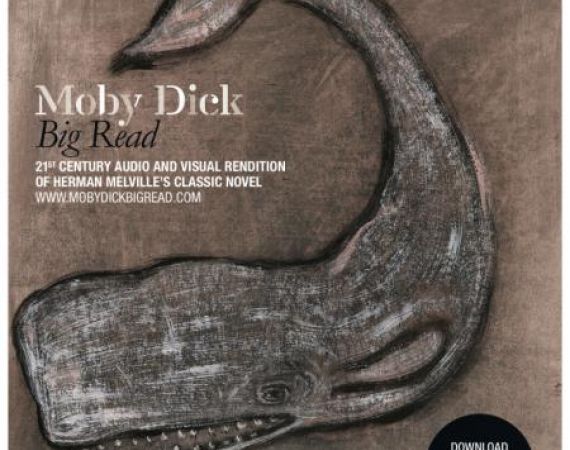Posted on Tue 13 Nov 2012
Taking a 19th Century novel to a 21st Century digital audience: Lunchtime Talk Write-Up
On October 26 Chris Hunt from i-DAT, a creative research lab based in Plymouth, came in to give a lunchtime talk about the wonderful www.mobydickbigread.com, a digital project which sets out to re-tell Moby Dick for a 21st Century audience.Chris began his talk by asking how many of us had read Moby…

On October 26 Chris Hunt from i-DAT, a creative research lab based in Plymouth, came in to give a lunchtime talk about the wonderful www.mobydickbigread.com, a digital project which sets out to re-tell Moby Dick for a 21st Century audience.
Chris began his talk by asking how many of us had read Moby Dick and was surprised that actually quite a few had! A formidable book with 136 Chapters it demands a substantial level of engagement from the reader. Indeed, author Philip Hoare, who conceived the idea for this project, has called it the Great ‘Unread’ American Novel, but he also believes the book continues to have relevance today:
“Incredibly prophetic, it foresaw so many of the aspects of the modern world with which we deal with. The abuse of power and belief; of nature and the environment; of the human spirit. It deals with art and artifice and stark reality – in an almost existential manner. It is truly a book before its time – almost ancient myth, as much as futuristic prophecy.”
To celebrate the work in all its sprawling glory, author Philip Hoare and artist Angela Cockayne set up mobydickbigread, a huge podcast stream, in which the book will be read in its entirety, one chapter a day, with a different reader taking on every chapter. The cross-section of individuals is remarkable: from Plymouth schoolchildren to fishermen to celebrities like Tilda Swinton - even David Cameron has a pop at chapter 30! Each reading is also accompanied by an image or video inspired by the novel, often created by a renowned artist.
Chris's involvement in the project began just before the summer where he and the i-DAT team needed to produce a system which could not only ingest and distribute all the content (audio, imagery, text, video etc) but that could also withstand the expected traffic likely to hit the website.
He explained that all the content for publication is on a master version of a Google spreadsheet so that those involved can make changes if necessary. Every night an app called a postbot downloads the spreadsheet, identifies what needs to be posted then releases the audio through soundcloud, then iTunes and then gets posted onto the wordpress site www.mobydickbigread.com. One of the approaches for this system was to separate the collection and organistion of the content from the way it is displayed. Rather than manually hiding and revealing material over time on the website; posting content is entirely automated.
The website has already proven to be a hit, since September 612,000 people have visited the site. Despite Chris not knowing in advance who would be narrating the chapters when he was building the site, he nevertheless ensured it was 'braced for impact' and the site survived the heavy traffic.
The website's stats began to reveal some interesting cycles. One example was what occurs when a 'celebrity chapter' goes live on the site. Online mainstream media coverage such as The Guardian and NY Times drive traffic to the site, this filters down into social media e.g. Facebook and Twitter, which then filters down into search engine. The resulting momentum created keeps the site 'alive' and Chris expects the million 'plays' barrier of the chapters to be broken by mid-November.
Discussion
What about the copyright?
Moby Dick is now out of copyright, making the project possible. We would like to extend the project next year to tie in with modern science fiction but because of copyright we might not be able to do it for free.
What’s going to happen to the material when the project is finished?
Once traffic dies down to the site after the project has finished we will be able to take the wordpress site off the dedicated server, we are then hoping to have an option for people to download all the content for a small donation to the Whale and Dolphin Conservation.
How was the audio recording coordinated?
People travel to local recording studios and make the recordings, which are then sent back to Deep Blue Sound Recording Studio in Plymouth to edit. Some are still being recorded by a large number are stored in dropbox ready to go. We hope to get the outstanding gaps filled in over the next few weeks so everyone can relax and watch the project unfold.
The Moby Dick Big Read project is still currently live, you can visit the site here: www.mobydickbigread.com
There are 59 chapters currently on the website, with a new one published each day, for you to download and listen to for free.
The project was dreamed up by author Philip Hoare and artist Angela Cockayne, and developed in collaboration with Peninsula Arts, i-DAT, Intercity and Deep Blue Sound, through generous support from Plymouth University and the Leverhulme Trust.